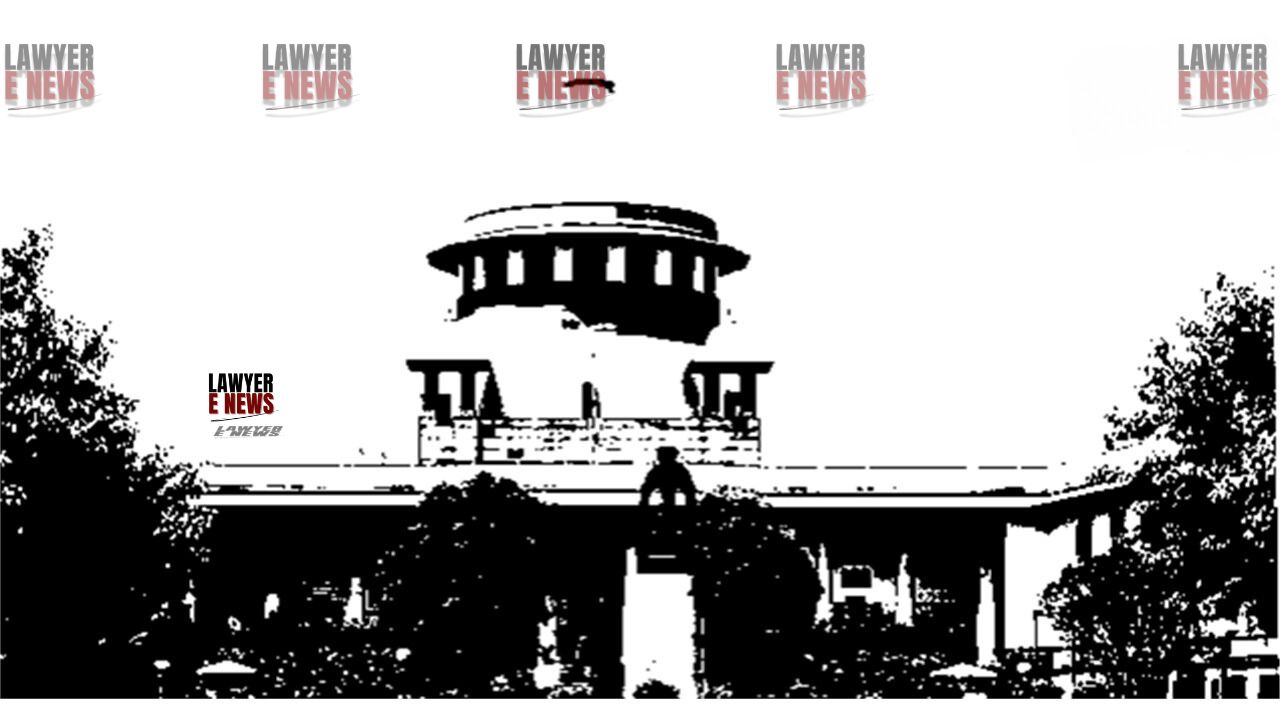-
by Admin
16 December 2025 4:32 PM



Supreme Court of India set aside the Orissa High Court’s order discharging the respondent from charges under Section 109 IPC and Section 13(1)(e) of the Prevention of Corruption Act, 1988. The Court held that the High Court exceeded its jurisdiction at the discharge stage by engaging in a meticulous examination of evidence instead of assessing whether a prima facie case existed.
"At the Stage of Discharge, Courts Are to Look for a Prima Facie Case, Not Clinching Evidence"
The Court emphasized that the threshold for framing charges is a prima facie case, not conclusive proof or evidence sufficient for conviction. The High Court’s approach of analyzing evidence in detail for "clinching material" was improper at the stage of discharge under Section 239 CrPC.
Supreme Court restored the charges framed against the respondent under Section 109 IPC (abetment) read with Section 13(1)(e) and Section 13(2) of the Prevention of Corruption Act, 1988, for alleged abetment in the acquisition of disproportionate assets by her husband, a public servant.
The case reinforces the principle that at the discharge stage, courts should focus on whether a prima facie case exists based on the materials on record and should not delve into a detailed analysis of the evidence.
The case arose from an FIR (No. 56/2009) registered against Anil Kumar Sethi, the husband of the respondent, who was serving as an Assistant Engineer in the Rural Works Department in Orissa. The investigation revealed that during his service from 1993 to 2009, Sethi allegedly amassed disproportionate assets worth ₹40.54 lakhs, which was 155% of his known sources of income.
The chargesheet alleged that his wife, Pratima Behera (the respondent), abetted him in acquiring the disproportionate assets. Despite claims that Behera was an independent income tax assessee with her own sources of income, the investigating agency found no verifiable records of her income tax returns.
The Trial Court framed charges against both Sethi and Behera under Section 13(1)(e) read with Section 13(2) of the Prevention of Corruption Act and Section 109 IPC. Behera moved the High Court seeking discharge under Section 239 CrPC, which was granted on the ground that there was no "clinching material" to establish abetment.
Legal Issues
Whether the High Court erred in quashing the charges at the discharge stage under Section 239 CrPC?
What is the scope of judicial review at the discharge stage?
Does the absence of “clinching evidence” justify discharge under Section 239 CrPC?
Scope of Section 239 CrPC: Prima Facie Case vs. Clinching Evidence
The Supreme Court reiterated that the primary consideration at the discharge stage is whether the materials on record disclose a prima facie case. It cited R.S. Nayak v. A.R. Antulay (1984) to emphasize that discharge is warranted only when the charge is “groundless.” The Court noted:
“At the stage of discharge, the Court is not required to conduct a meticulous examination of evidence or assess its sufficiency for conviction. A strong suspicion founded on materials is sufficient to frame charges.”
The High Court’s reliance on the absence of “clinching evidence” to discharge the respondent was criticized as exceeding the scope of Section 239 CrPC.
Disproportionate Assets and Abetment: Relationship Alone Is Insufficient
The Court acknowledged that mere relationship with a public servant does not automatically establish abetment under Section 109 IPC. However, the Court emphasized that materials on record must be considered holistically to assess whether they raise a prima facie case of abetment.
The respondent’s claim that she was an independent income tax assessee was not substantiated during the investigation. The Court observed:
“The absence of income tax returns despite repeated efforts by the investigating agency raises a strong suspicion of abetment, sufficient to frame charges at this stage.”
The Supreme Court criticized the High Court for exceeding its jurisdiction by engaging in a detailed examination of evidence at the discharge stage. The Court observed:
“The High Court’s meticulous analysis of evidence for ‘clinching material’ is beyond the scope of its revisional jurisdiction and contrary to the principles laid down in Minakshi Bala v. Sudhir Kumar (1994).”
The High Court’s reliance on documents submitted during the revision, purportedly obtained under the RTI Act, was also deemed improper since such documents were not part of the investigation record.
Prima Facie Case Established: The Trial Court correctly found a prima facie case against the respondent based on the materials, including her inability to produce verifiable income tax returns and the disproportionate assets in her name.
Improper Discharge: The High Court’s reasoning that “clinching evidence” was required to frame charges was contrary to established legal principles.
Jurisdictional Overreach: The High Court overstepped its revisional jurisdiction by delving into the sufficiency of evidence, which is the Trial Court’s domain during the trial stage.
The Supreme Court allowed the appeal, setting aside the High Court’s order discharging the respondent. The Trial Court’s decision to frame charges was restored, and the Court directed the Trial Court to proceed expeditiously.
Key Directions:
The charges framed by the Trial Court against the respondent stand reinstated.
The Trial Court shall conduct the trial in accordance with law and endeavor to complete it as expeditiously as possible, given that the case dates back to 2013.
The Court clarified that its observations were limited to the discharge stage and should not influence the trial’s outcome.
This judgment underscores the limited scope of judicial scrutiny at the discharge stage under Section 239 CrPC, emphasizing that the existence of a prima facie case, not conclusive proof, is the standard for framing charges. By restoring the charges against the respondent, the Supreme Court has reinforced the principle that detailed evaluation of evidence is reserved for the trial stage, not for discharge.
Date of Decision: December 19, 2024
